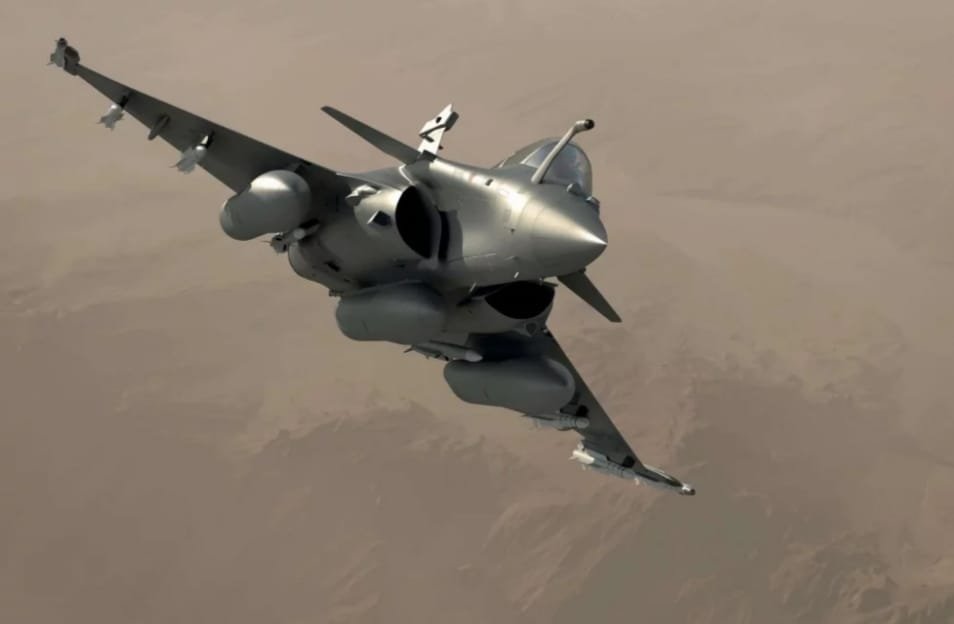
Greece plans to acquire 10 additional French Rafale F4 Fighters
On May 10, 2024, the Hellenic Air Force General Staff announced its intention to acquire up to ten new Rafale F4 fighter jets from Dassault Aviation. This move is part of a broader strategy to modernize the Greek air force, which involves phasing out older models such as the F-4 Phantom and Mirage 2000-5 in favor of a more compact and technologically advanced fleet.
Greece has entered into advanced discussions to purchase up to an additional 10 Rafale F4 fighter jets from Dassault Aviation, as part of an initiative to modernize and streamline its air force. This effort comes in a context where Athens is looking to retire older models like the F-4 Phantom and the Mirage 2000-5, prioritizing a smaller but more technologically advanced fleet.
The renewed interest of Greece in the Rafales is underpinned by the defense agreement signed with France in September 2021, which includes a mutual assistance clause and aims to enhance interoperability and cooperation between the two nations. However, as the renewal in 2026 approaches, the agreement’s effectiveness is questioned by experts.
This move comes as Greece also considers selling its Mirage 2000-5s, potentially to India, to partially finance the purchase of the additional Rafales. Should these transactions materialize, they would mark a significant shift in Greek air defense strategy, centered around the Rafales and upgraded F-16s to the Block 70 “Viper” standard.
As a reminder, under its air force modernization strategy, Greece aims to assemble an average fleet of 200 modern 4.5th and 5th generation aircraft by 2030, according to Defense Minister Nikolaos Dendias. This fleet will include 82 F-16C/-D Block 52+/-Block 52+ Advanced, currently being upgraded to the Viper configuration, and 38 F-16C/-D Block 50, also to be updated. The 24 already contracted Rafale F3Rs are included in these figures. Together with additional planned acquisitions like the F-35A Lightning II, these will comprise a total of 144 fighters, marking significant progress toward the target of 200 advanced aircraft.
Since 2020, Greece has ordered a total of 24 Rafales, initially allocated at the F3R standard to the French Air & Space Force, underscoring their growing significance in Greek national defense. With the potential new order of 10 Rafale F4s, the Hellenic Air Force would increase its total aircraft to 210, including 34 Rafales across the F3R and F4 standards, thus enhancing its defensive capabilities in a geopolitically unstable region.
The Rafale F4 represents a significant evolution from its predecessor, the Rafale F3R, thanks to a series of technological improvements that enhance its combat, survival, and operational cooperation capabilities. While the F3R introduced improvements in avionics systems and sensors, including the RBE2 AESA radar and the ability to carry long-range Meteor air-to-air missiles, the F4 advances these with more extensive updates to avionics, improved electronic warfare with the SPECTRA system, and integration of advanced reconnaissance systems. In terms of connectivity, the F4 surpasses the F3R by incorporating satellite communication features and enhanced networking capabilities, essential for network-centric warfare. It can also carry a wider range of modern weapons and benefits from advanced cockpit technologies, such as touch screens, which facilitate piloting and tactical operations. Lastly, the F4 is designed for faster and adaptive software updates, allowing smooth integration of emerging technologies, making this aircraft particularly suited to meet the challenges of the modern battlefield.


